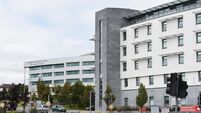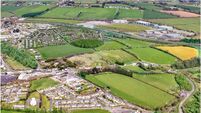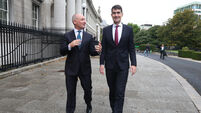House prices to rise by 7% in 2005, says lender
IIB Homeloans has revised its house price forecast up from 5% to 7% in 2005 and has seen a surge in home loan demand at a time when consumer sentiment has been lacklustre elsewhere in the economy.
Property values rose by €30 billion last year after the level of borrowing is deducted.
That figure is destined to have a profound impact on the home buying market in the coming years, said IIB chief economist Austin Hughes.
The splurge in value last year suggests an additional €1.5bn being injected into the economy in 2005, much of it in property, but also on improving lifestyles, he said.
Last year GNP grew by about €7bn so an extra €1.5bn being released into the economy in equity release is quite a large amount, Mr Hughes said.
“The housing market is stronger than we economists have thought and consumer sentiment is showing stronger demand than we anticipated,” he said.
A recent IIB survey suggests one-in-nine people will buy a property over the next two years, which implies very strong demand still out there, said Mr Hughes.
Irish homeowners are only beginning to appreciate the equity they have or are building up in their own family homes.
Experience elsewhere suggests that some of that money will be released over the next few years, he said.
IIB’s analysis indicates housing demand is likely to remain buoyant.
“We have seen a surge in borrowing demand in IIB homeloans of late,” he said.
It is this surge that prompted IIB to revise its house price figures upwards for 2005.
Meanwhile, competition among property developers is driving up prices for sites and houses, despite expectations of a market slowdown this year, a survey has shown.
Prices for housing sites rose at an even faster rate than house prices during 2004, according to findings by the Irish Auctioneers and Valuers’ Institute (IAVI).
It appears to indicate confidence in the strength of the residential market over the next few years, as other forecasts identify this as the year in which supply will begin to exceed demand and slow down the rate of price inflation.
The anomaly of sites’ values outpacing house price increases was noted by IAVI chief executive Alan Cooke, who said it indicated the construction industry’s hopes for a soft landing could be fulfilled.
“Our survey shows that in 2004 the price of residential development land across the country rose more quickly than the price of new homes. New house prices in Dublin rose by 8% to 10% last year, but sites for future building rose by 12% and 13%,” he said, adding that the same trend was seen right around the country.
“It might be expected that the pace of price growth for sites would slacken, considering the upsurge in the supply of development land during the second half of 2004 and the warnings from analysts associated with lending institutions that the supply of new housing in the short-to-medium term may exceed demand.
“Instead, the rate of increase accelerated year-on-year and there is evidence that investors believe continued net immigration is likely to underpin residential investment - despite clear evidence of a continuing fall in residential rents in most areas,” said Mr Cooke.
Members surveyed in the IAVI’s 1,800 member-strong institute said they believed the drop in residential rents was, however, now leveling off.













